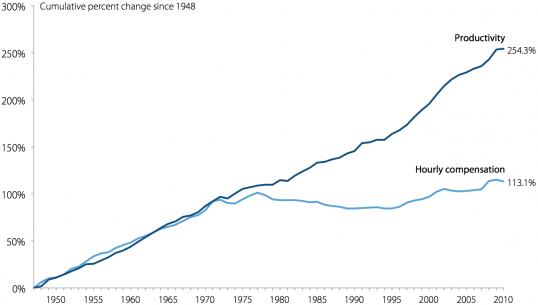
"Productivity in the economy grew by 80.4 percent between 1973 and 2011 but the growth of real hourly compensation of the median worker grew by far less, just 10.7 percent….
"The pattern was very different from 1948 to 1973, when the hourly compensation of a typical worker grew in tandem with productivity.
"Reestablishing the link between productivity and pay of the typical worker is an essential component of any effort to provide shared prosperity and, in fact, may be necessary for obtaining robust growth without relying on asset bubbles and increased household debt."
40 Years of Economic Policy in One Chart CounterPunch Tells the Facts Names the Names
In the 1970s wages detached from productivity and the richest among us began using their newly acquired wealth to reduce taxes on capital, role back regulations, break unions, "and induce their shady Central Bank buddies to keep interest rates locked below the rate of inflation so they could cream hefty profits off gigantic asset bubbles."
Mission Accomplished?

